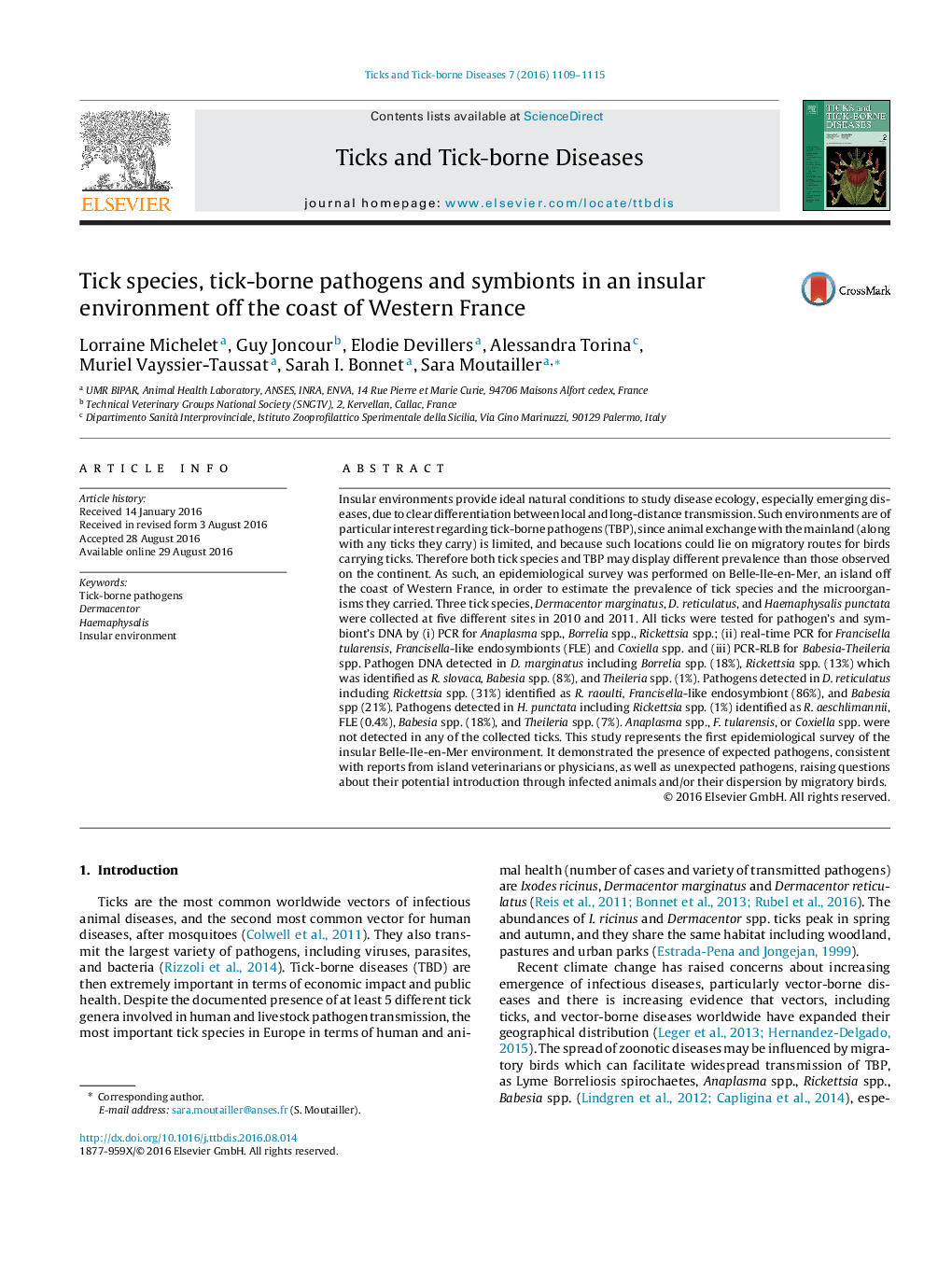| Article ID | Journal | Published Year | Pages | File Type |
|---|---|---|---|---|
| 5546497 | Ticks and Tick-borne Diseases | 2016 | 7 Pages |
Insular environments provide ideal natural conditions to study disease ecology, especially emerging diseases, due to clear differentiation between local and long-distance transmission. Such environments are of particular interest regarding tick-borne pathogens (TBP), since animal exchange with the mainland (along with any ticks they carry) is limited, and because such locations could lie on migratory routes for birds carrying ticks. Therefore both tick species and TBP may display different prevalence than those observed on the continent. As such, an epidemiological survey was performed on Belle-Ile-en-Mer, an island off the coast of Western France, in order to estimate the prevalence of tick species and the microorganisms they carried. Three tick species, Dermacentor marginatus, D. reticulatus, and Haemaphysalis punctata were collected at five different sites in 2010 and 2011. All ticks were tested for pathogen's and symbiont's DNA by (i) PCR for Anaplasma spp., Borrelia spp., Rickettsia spp.; (ii) real-time PCR for Francisella tularensis, Francisella-like endosymbionts (FLE) and Coxiella spp. and (iii) PCR-RLB for Babesia-Theileria spp. Pathogen DNA detected in D. marginatus including Borrelia spp. (18%), Rickettsia spp. (13%) which was identified as R. slovaca, Babesia spp. (8%), and Theileria spp. (1%). Pathogens detected in D. reticulatus including Rickettsia spp. (31%) identified as R. raoulti, Francisella-like endosymbiont (86%), and Babesia spp (21%). Pathogens detected in H. punctata including Rickettsia spp. (1%) identified as R. aeschlimannii, FLE (0.4%), Babesia spp. (18%), and Theileria spp. (7%). Anaplasma spp., F. tularensis, or Coxiella spp. were not detected in any of the collected ticks. This study represents the first epidemiological survey of the insular Belle-Ile-en-Mer environment. It demonstrated the presence of expected pathogens, consistent with reports from island veterinarians or physicians, as well as unexpected pathogens, raising questions about their potential introduction through infected animals and/or their dispersion by migratory birds.
